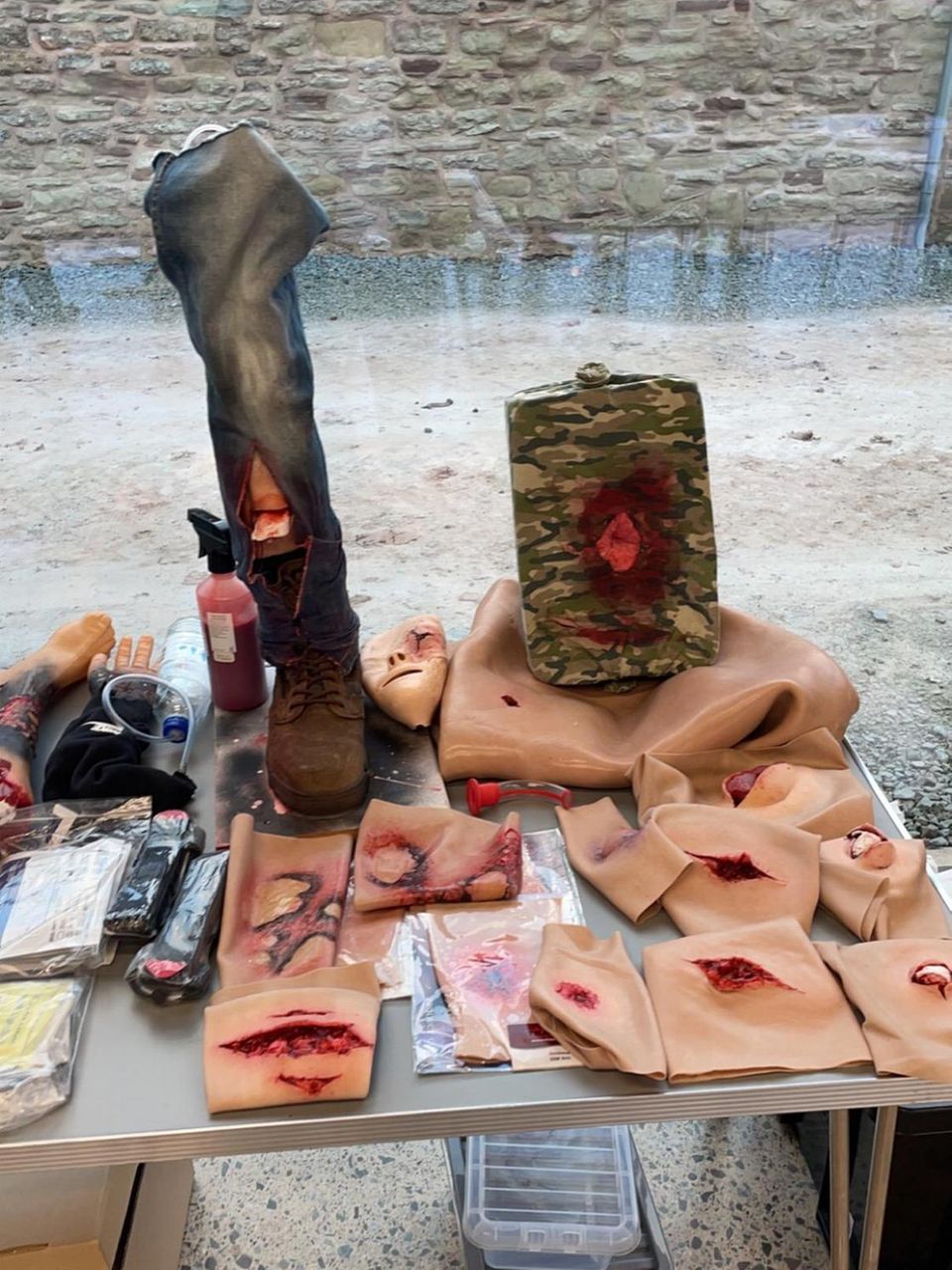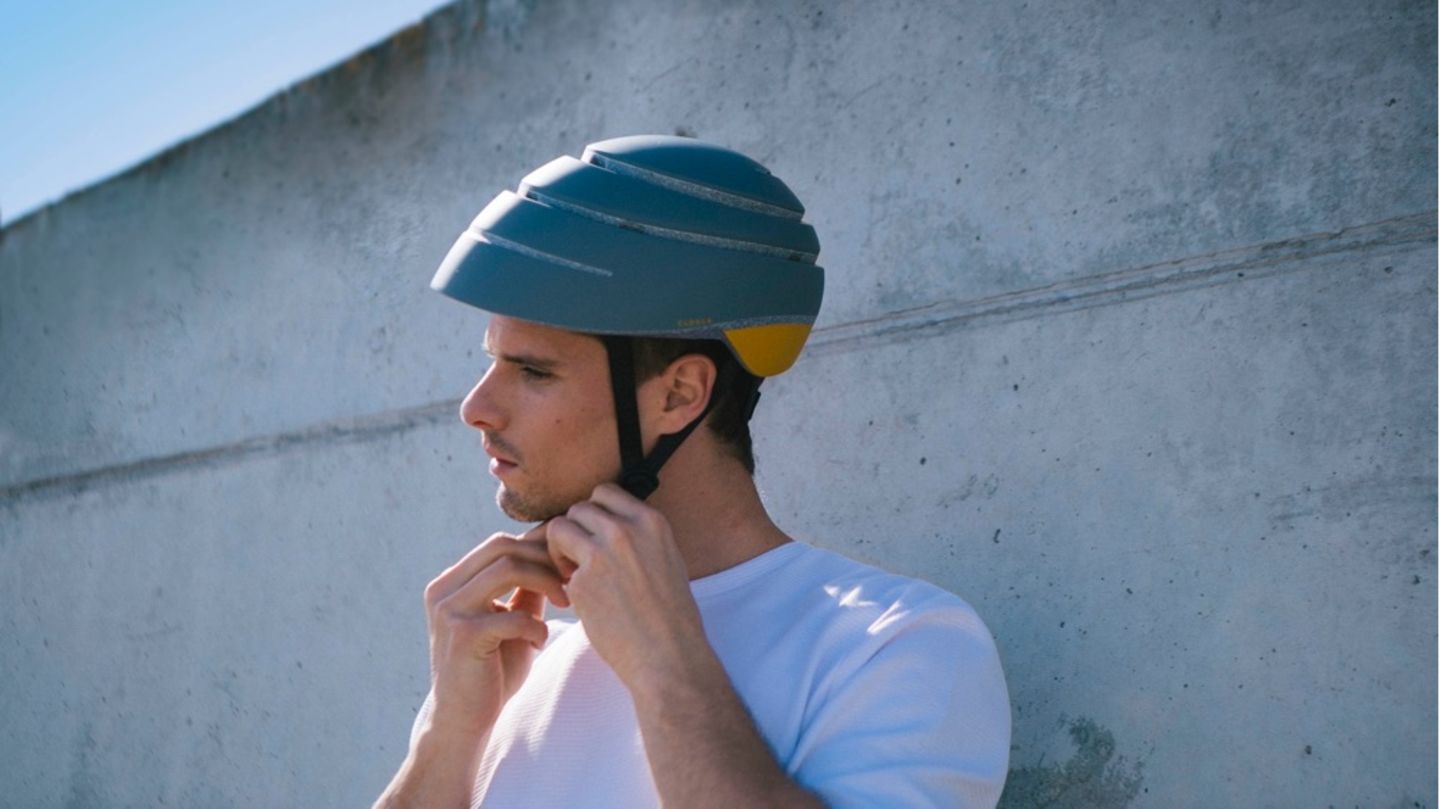A boot camp is supposed to prepare me for my reporting assignment in a war zone. I now know how to treat severed limbs, which floor to book my hotel rooms on and what it feels like to be kidnapped. Does it have to be that way? Yes.
Making-of is the name of our new format. We want to give you a personal look behind the scenes, tell you about our everyday journalistic life and our research. Today with stern foreign reporter Fabian Huber.
With every breath my lungs struggle a little more, my mouth sucks in the scratchy, black cap that has been placed over my head. Cable ties cut into my wrists, which were tied behind my back, constricting my fingers. How long have I been standing here, breathless, numb, blind, with my head buried in the groove of a corrugated iron wall? An hour maybe? One and a half? I don’t know it. Time melts away. When I ask the wheezing Japanese reporter colleague next to me whether everything is okay considering the circumstances, one of our guards hits me in the side with the stock of his Kalashnikov and shouts: “Shut the fuck up!”
Then everything turned out well. The Kalashnikovs were exhibits, my tormentors were trained military officers from NATO allies, the location of the incident was the hilly pampas of western England and not the Hindu Kush, and the kidnapping was just part of an exercise. An hour after my bonds had been cut, I was back in a heated-floor conference room for a debriefing: How had we fared as hostages? Had we recently given some life support to our contact’s torn foot? And had it been clever to bribe the border guards?
Training for emergencies or in other words – for business trips under extreme conditions
No, I didn’t try to get accepted into the GSG9, but rather did a – what should you call it – further training? A crash course for reporters who are sent to war and crisis areas.
Qua position in the foreign department of star My possible areas of application include: earthquake in Turkey, tensions in Nagorno-Karabakh, war in the Middle East. These are business trips under extreme conditions. Routes have to be planned, risks weighed up, emergency plans devised. What should we do if Ben-Gurion Airport in Tel Aviv, Israel’s only international airport, suddenly closes? The most promising escape route would then lead for hours by car through the Negev desert and finally across the Jordanian border to the city of Aqaba.
A gunshot wound to the chest? We had never seen it before
There is never a guarantee of safety in such operations. Just recently, a ZDF team was seriously injured in a Russian rocket attack on a hotel in Kharkiv, eastern Ukraine. But that’s exactly why it doesn’t hurt to be as prepared as possible for all eventualities, to know what to do in an emergency and when it’s better not to take a risk. So that’s why: the safety training in England.
We are a colorful, international bunch of reporters, quartered in a restored farmstead, with the mountains of Wales on the horizon, but right now all we can see are bloody videos. None of us had ever seen a bubbling gunshot wound to the chest before, in English “sucking chest wound”, in medical terminology: open pneumothorax. Either way: life-threatening and a pretty unpleasant sight. There is Humza, the future Pakistan correspondent Financial Times. Madoka from the Japanese newspaper Nikkei is sent to Ukraine. Photographer Zoe, who wants to run from England to Kenya, more than a marathon every day. Cameraman Andrew, stationed in the no longer so peaceful Europe for the Australian public broadcaster. And my colleague Katharina Kunert and I, who are responsible for that star should report from Israel, among other things.

“Does that have to be the case?” my friends at home often ask me. Flying in when everyone else is flying out, when the Foreign Office is emailing warnings to German citizens and preparing evacuation flights? “Can’t you also report from Germany?”
“Yes, I have to,” I always say. “And no, you can’t.”
I hate empty phrases, but often empty phrases are rightly empty phrases because they untangle the turmoil of the world and bring it to a memorable point. “The first victim of war is always the truth,” is a saying.
Ukraine is coming under constant attack from Russian propagandists online. A war of images has been raging in Israel for months; the terrible photos from Gaza have replaced the terrible photos from the kibbutzim. The Israeli military is therefore trying to maintain its narrative through guided press tours to the combat zone. Participants see Hamas tunnels, but no suffering civilians.
If I ever have to revive someone, I’ll think of the Bee Gees in the future
Being able to assess these impressions, straighten them out, contextualize them and feel the suffering, the sadness, the anger of the people themselves – none of this is possible without being there. The fact that Gaza remains inaccessible to us journalists, with the exception of the controlled army leadership, is frustrating. We would like to report more. But we can’t. The star is still on the Israeli waiting list.
If it comes to that, at least I know after England: A tree only protects against shots if it is over 50 centimeters thick. Experience has shown that the danger radius of an explosive belt is 100 meters. I will book my hotel room in Tel Aviv between the third and sixth floors, high enough to not be immediately accessible to unwanted guests, and low enough for the vast majority of fire department ladders. And if I ever have to resuscitate someone, I’ll think of the Bee Gees – “ah, ha, ha, ha, stayin’ alive,” 104 beats per minute, the perfect rhythm for chest compressions.
Source: Stern
I have been working in the news industry for over 6 years, first as a reporter and now as an editor. I have covered politics extensively, and my work has appeared in major newspapers and online news outlets around the world. In addition to my writing, I also contribute regularly to 24 Hours World.




